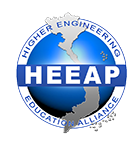The Higher Engineering Education Alliance Program (HEEAP) brings together government, academia, and industry leaders to modernize and advance Vietnamese engineering higher education. The alliance kicked off in 2010 with $5 million in funding and a three-year commitment from Intel Vietnam, the United States Agency for International Development (USAID), and Arizona State University (ASU). The past two summers, 78 Vietnamese lecturers from five technical universities and three vocational schools completed training programs at ASU. Participating Vietnamese faculty learned new instructional and pedagogical methods and have since been revising and implementing their new course materials to include a more applied and project based focus.
For Ms. Phan Thi Thu Thuy, lecturer at Ho Chi Minh City University of Technical Education (UTE), the training in Arizona completely changed the way she facilitates. Now Ms. Thuy is much more confident in the content of her curriculum and her facilitation abilities. Incorporating active learning techniques into her curriculum, Ms. Thuy requires teamwork from all her students and assesses student performance by using evaluation forms, in-class assignments, and bonus points. “Students are much more active when they receive bonus points in class,” noted Ms. Thuy.
Dr. Pham Dinh Truc of Ho Chi Minh City University of Technology (HCMUT) is employing the same techniques into his classes. At the beginning of the semester, Dr. Truc divides students in his electrical machinery course into teams and they work together to tackle different technical projects. Within their teams, students not only learn how to solve technical problems but they also practice their team work, leadership, and communication skills. All of these skills are essential for a modern-day engineer.
Students are welcoming these curriculum and classroom changes. Huynh Huu Huy, a 3rd year student of Dr. Truc, said, “We had to speak English all the time. We learnt how to work with friends, how to assign jobs, how to plan, how to lead, how to give presentations. Some skills like ‘meeting minutes’ are simple, but they make our meetings very productive.”
HEEAP faculty are innovative in finding new ways to inspire their students. Mr. Vo Xuan Tien of UTE is organizing active learning activities related to the subjects he teaches. Mr. Tien has found the “games” he learned during his training at ASU are effective and exciting to the students as well. Consequently, students have been establishing and maintaining more effective student teams, making the classroom experience much more enjoyable.
In addition to faculty development, HEEAP is evoking changes in leadership development, labs, and university infrastructure. Leadership from the participating universities traveled to ASU to learn about transforming their institutions into regionally and globally competitive universities. New industry partners, Siemens, Danaher, and Cadence recently joined the HEEAP partnership and have donated equipment, software, and financial support. To bring a holistic transformation to Vietnamese technical education, the HEEAP 2.0 plan targets a larger scale, ultimately creating a larger impact in Vietnam. Presented to the Vietnamese government by Intel and ASU, this new plan includes new components: distance education, diversity and instructional expert development, and English teaching.
Diversity is one of the core components of HEEAP 2.0. Vietnam needs to increase the number of female student enrollments in engineering and applied technology majors. When we spoke with Ms. Tran Diep, one of a few females in Ms. Thuy’s class, she said she “sometimes felt lonely in her engineering classes and wished there were more girls in technical fields.” Ms. Diep said she is aware that Vietnam is in need of more engineers to serve its growing hi-tech industry and she spoke proudly of the role Vietnamese women can play in modernizing the country.

